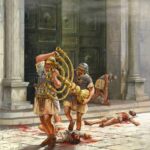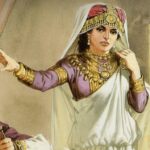Castor and Pollux, also known as the Dioscuri, played an important role in Greek mythology but also gained special honour in ancient Rome. Considered the protectors of soldiers and patrons of cavalry, they symbolized brotherly loyalty and heroism. Their mythical birth from Queen Leda and the god Zeus (according to Hesiod), who took the form of a swan, gave them divine status, although Castor, unlike Pollux, was mortal.
They were united by sincere brotherly love. After Castor’s death, Zeus turned them both into a constellation in the northern sky so that they would remain together forever.
In Rome, the Dioscuri were revered especially after the famous battle of Lake Regillus (499 or 496 BCE), where, according to legend, they appeared on the battlefield helping the Romans to victory over the Latins. After this event, their famous temple was built in the Roman Forum, where they served as guardians of state power and prosperity. The temple was not only a place of religious worship but also a place for political and judicial meetings.
Castor and Pollux were also considered protectors of travellers, especially sailors because according to myth they appeared in the sky in the form of stars (known today as the constellation Gemini) to herald favourable weather conditions. Their images often decorated coins, and the presence of the divine twins symbolized unity and protection over the Roman people.
In ancient Rome, the feast of the Dioscuri was celebrated on July 15.







